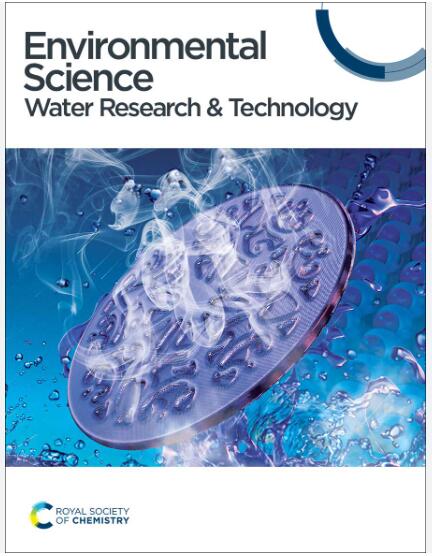First report of components responsible for odor sensation from a vertical flow constructed wetland treating combined sewer overflow
IF 3.5
4区 环境科学与生态学
Q3 ENGINEERING, ENVIRONMENTAL
引用次数: 0
Abstract
The present study represents the first attempt to demonstrate the online monitoring of components responsible for odor sensation from a constructed wetland (CW) utilized in treating combined sewer overflow (CSO). An experimental CSO treatment plant located in the south of Chile, employing vertical flow (VF) CW, was monitored. The components responsible for odor generation—hydrogen sulphide (H2S), methyl mercaptens (CH3SH) ammonia (NH3) and volatile organic compounds (VOCs) — were tracked for 27 days. During the study, the VF CW underwent two operational phases with CSO loadings, each lasting four days. The findings reveal minimal generation of H2S, CH3SH and NH3 from the VF CW during the monitoring period, regardless of its operational status or the time of the day. However, VOCs exhibited different behavior. VOCs emerged as a potential contributor to odor sensation, with elevated levels observed during specific morning hours, which intensified when the VF CW was not operational. Nevertheless, the results suggest that the VF CW treatment has a limited impact on the production of gases responsible for odor sensation. This is complementary to previous studies focusing on water quality assessment, highlighting the potential of this technology for sustainable CSO treating.首次报告垂直流人工湿地处理联合污水溢流时产生臭味的成分
本研究首次尝试对用于处理污水溢流(CSO)的人工湿地(CW)中产生臭味的成分进行在线监测。对位于智利南部、采用垂直流(VF)CW 的实验性 CSO 处理厂进行了监测。对产生臭味的成分--硫化氢 (H2S)、甲硫醇 (CH3SH)、氨 (NH3) 和挥发性有机化合物 (VOC) 进行了 27 天的跟踪。在研究过程中,VF 化學廢物處理廠經歷了兩個具有 CSO 負荷的運行階段,每個階段持續四天。研究结果表明,在监测期间,无论 VF CW 处于何种运行状态,也无论一天中的什么时间,其产生的 H2S、CH3SH 和 NH3 都极少。然而,挥发性有机化合物却表现出不同的行为。挥发性有机化合物是造成臭味的一个潜在因素,在上午的特定时间段内,挥发性有机化合物的浓度会升高,而当 VF 化學廢物處理設施不工作时,浓度会升高。尽管如此,研究结果表明,变频冷凝水处理对产生臭味的气体影响有限。这与之前以水质评估为重点的研究相辅相成,凸显了该技术在可持续 CSO 处理方面的潜力。
本文章由计算机程序翻译,如有差异,请以英文原文为准。
求助全文
约1分钟内获得全文
求助全文
来源期刊

Environmental Science: Water Research & Technology
ENGINEERING, ENVIRONMENTALENVIRONMENTAL SC-ENVIRONMENTAL SCIENCES
CiteScore
8.60
自引率
4.00%
发文量
206
期刊介绍:
Environmental Science: Water Research & Technology seeks to showcase high quality research about fundamental science, innovative technologies, and management practices that promote sustainable water.
 求助内容:
求助内容: 应助结果提醒方式:
应助结果提醒方式:


